In today’s digital age, businesses rely heavily on electronic signatures and document management solutions to streamline their processes and increase efficiency.
Two popular choices in this space are PandaDoc and DocuSign.
Whether you’re a small business looking for a cost-effective and user-friendly option or a large enterprise seeking unparalleled security and compliance, the choice between PandaDoc and DocuSign can significantly impact your document-related processes.
This guide will explore the key features, pricing, integrations, and user experience of both PandaDoc and DocuSign.
By exploring the unique features and capabilities of PandaDoc vs. DocuSign, organizations can make a well-informed choice that aligns perfectly with their specific needs.
1. Overview:
PandaDoc:
PandaDoc is an all-in-one document automation platform designed to streamline document creation, electronic signatures, and workflow management.
It aims to help businesses accelerate the way they create, send, and track documents while simplifying the approval process.
PandaDoc primarily caters to small and medium-sized businesses (SMBs) as well as some larger enterprises.
DocuSign:
DocuSign is a pioneer in the electronic signature industry, offering a comprehensive platform for electronic signature solutions.
It provides a secure and legally binding way to sign documents digitally, making it a trusted choice for businesses worldwide.
DocuSign primarily targets larger enterprises and organizations with complex document workflows and stringent security and compliance requirements.
2. Key Features Comparison
Document Creation and Editing:
PandaDoc
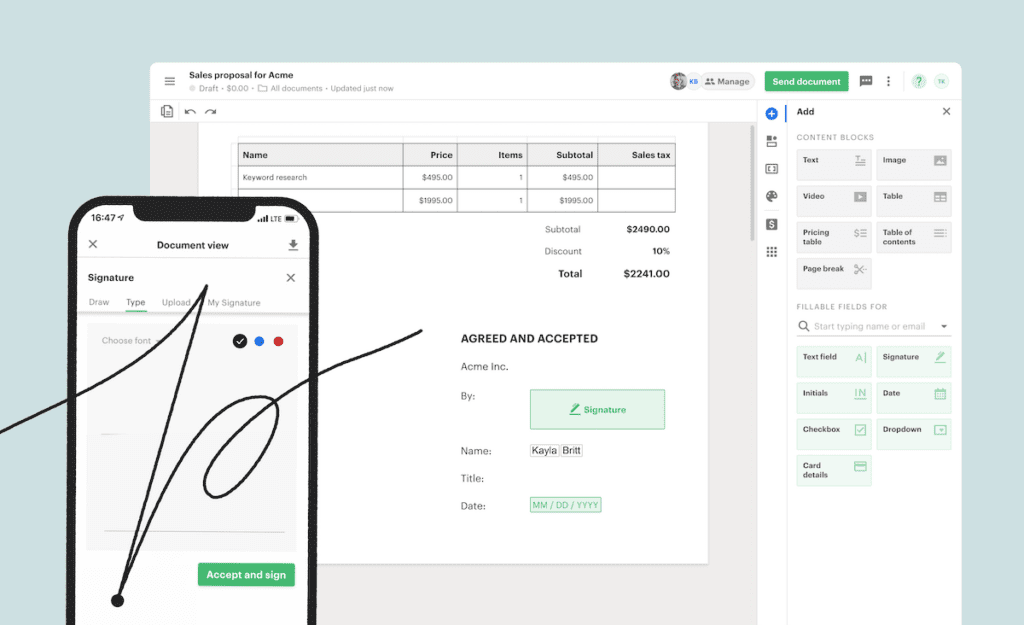
PandaDoc offers a user-friendly document editor with drag-and-drop functionality, allowing users to create professional documents quickly. It supports various document types, including proposals, contracts, and quotes.
DocuSign
DocuSign primarily focuses on electronic signatures and offers limited document creation and editing capabilities. Users can generate agreements and upload existing documents for signing, but may need to use external tools for more complex document creation.
Electronic Signatures:
PandaDoc
PandaDoc provides legally binding electronic signatures that comply with industry standards and regulations. It offers features like in-person signing, remote signing, and document expiration.
DocuSign
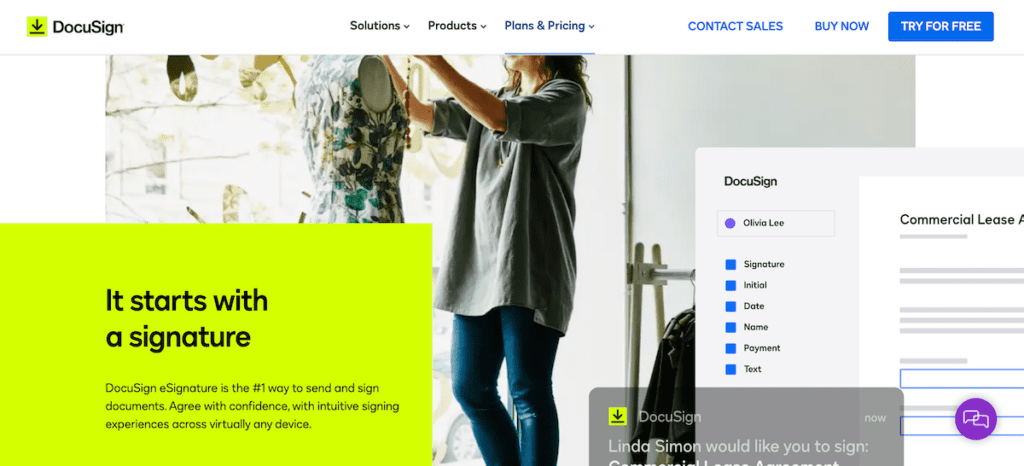
DocuSign is renowned for its electronic signature capabilities, offering advanced signing options such as sequential signing and multi-party signing. It adheres to strict security and compliance standards.
Workflow Automation:
PandaDoc
PandaDoc excels in workflow automation, allowing users to create custom approval workflows, set up reminders, and track document status.
Seamlessly foster collaboration within the proposal itself or instill a sense of urgency with automatic follow-up reminders to keep the conversation alive
It integrates with CRM softwares to automate document generation.
DocuSign
Eliminate bottlenecks and obstacles through automated workflows that ensure contracts keep progressing seamlessly. Utilize an intuitive drag-and-drop editor to design your contract processes.
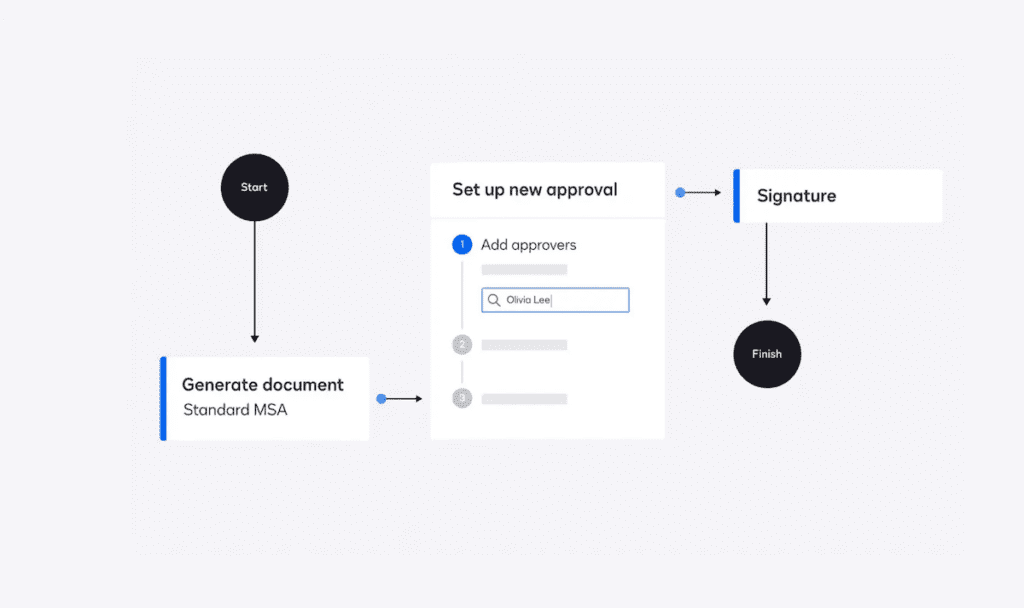
Leverage a vast selection of over 100 pre-configured workflow steps for tasks such as contract generation, review, approval, sending for signature, and secure storage.
Plus, effortlessly integrate Contract Lifecycle Management (CLM) with your existing tools and platforms through our pre-built connectors and robust APIs, ensuring a cohesive workflow aligned with your team’s preferences.”
Integration Capabilities:
PandaDoc
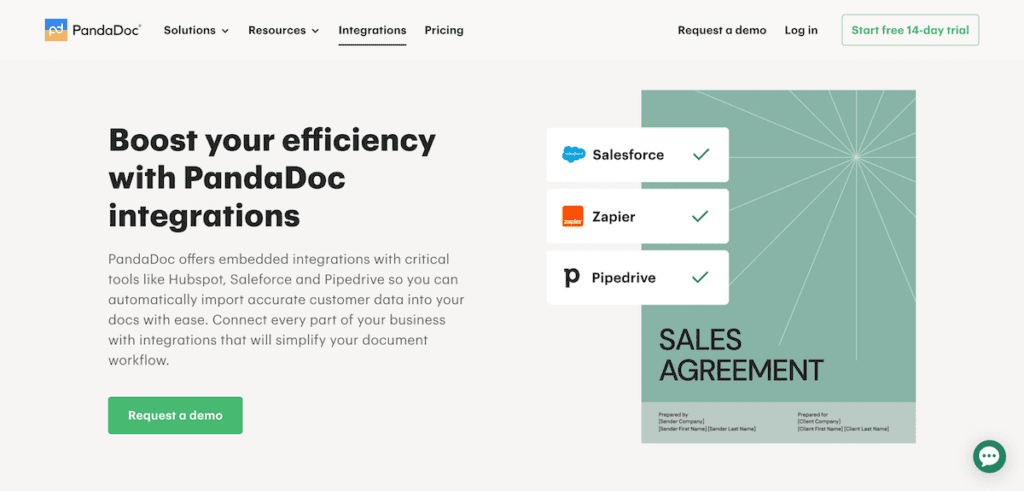
PandaDoc offers a wide range of integrations with popular business tools, including CRMs like Salesforce and HubSpot, Project management platforms like ClickUp, payment processors like Stripe, and cloud storage services like Google Drive.
DocuSign
DocuSign has an extensive list of 400+ integrations, connecting with various software solutions like Salesforce, Microsoft Office 365, and Dropbox, making it suitable for enterprise-level businesses.
Security and Compliance:
PandaDoc
PandaDoc takes security seriously, with features like document encryption, access controls, and compliance with GDPR and HIPAA regulations. It offers audit trails for tracking document changes.
DocuSign
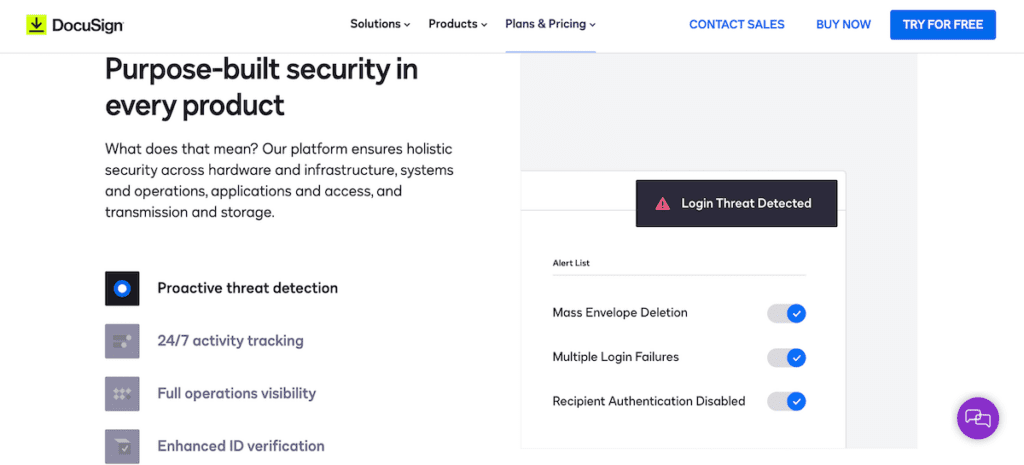
DocuSign is known for its robust security measures, including SOC 2 Type 2 certification and compliance with eIDAS, GDPR, and HIPAA. It also provides detailed audit trails and access controls.
3. Use Cases
Ideal Scenarios for PandaDoc:
- Small to medium-sized businesses requiring comprehensive document creation and automation.
- Teams looking for an all-in-one solution for document management.
- Companies that value a user-friendly interface and ease of collaboration.
Ideal Scenarios for DocuSign:
- Enterprises in need of a robust, secure, and legally binding electronic signature solution.
- Businesses with complex signing workflows and a focus on compliance.
- Organizations looking for extensive integrations with enterprise software.
4. Pricing
PandaDoc Pricing:
PandaDoc offers three pricing plans:
- Essentials Plan: $35/m – For creating impressive documents.
- Business Plan: $65/m – Suitable for larger teams.
- Enterprise Plan: – Contact for pricing. For large companies.
Pricing varies depending on the number of users and features required.
DocuSign Pricing:
DocuSign offers several pricing tiers:
- Personal: $15/m – Designed for individuals and small businesses.
- Standard: $45/m – Suitable for small to medium-sized businesses.
- Business Pro: $65/m – Geared towards larger businesses with advanced features.
- Enterprise: Contact for pricing. Tailored solutions for large enterprises.
Pricing is based on the number of users and additional features needed.
5. Pros and Cons
PandaDoc Pros:
- Robust document creation and editing tools.
- Comprehensive workflow automation.
- Extensive integration options.
- Strong security and compliance features.
- Mobile app for on-the-go access.
- Competitive pricing for small to medium-sized businesses.
PandaDoc Cons:
- Limited focus on electronic signatures.
- Document storage limits on lower-tier plans.
DocuSign Pros
- Industry-leading electronic signature capabilities.
- Extensive integrations with major software.
- Stringent security and compliance measures.
- Easy-to-use signing experience.
- Suitable for large enterprises.
DocuSign Cons:
- Limited document creation and editing features.
- Higher pricing for advanced features.
- May be overkill for small businesses with simple needs.
Final Thoughts
Choosing between PandaDoc and DocuSign ultimately depends on your specific business needs and priorities.
- If your primary focus is on document creation, automation, and collaboration, PandaDoc is an excellent choice, especially for small to medium-sized businesses.
- On the other hand, if you require a world-class electronic signature solution with an emphasis on security and compliance, DocuSign is the industry leader, making it an ideal choice for large enterprises.
For more guides and breakdowns, check out our Tools and Resources area of the website.







